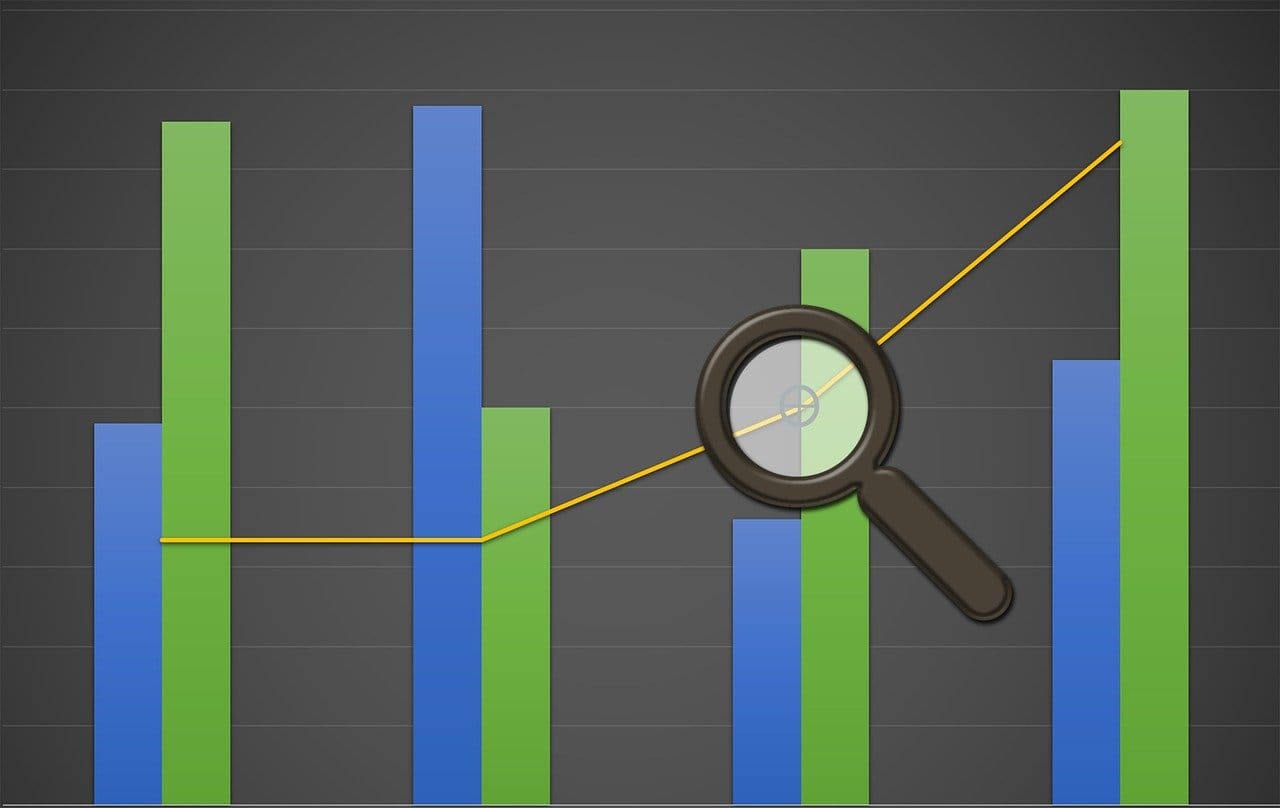Aging Populations and Economic Growth | Preparing for Demographic Shifts
Navigate the economic impact of aging populations with strategic planning. Explore insights on demographic shifts and optimize growth for a resilient future

Understanding the Impact of Aging Populations on Economic Growth
As the world's population ages, the implications for economic growth are becoming increasingly significant. The demographic shifts caused by aging populations have a profound impact on economic planning and policy. Understanding these implications is crucial for governments, businesses, and individuals to navigate the challenges and opportunities presented by this global phenomenon.
Population aging is a result of declining fertility rates and increasing life expectancy, leading to a larger proportion of elderly individuals in the population. This demographic shift has far-reaching effects on various aspects of economic development, including labor force dynamics, healthcare expenditures, pension systems, and overall productivity. As the proportion of working-age individuals decreases relative to the elderly population, it becomes imperative to reevaluate economic policies and social programs to ensure sustained growth and prosperity.
The economic implications of population aging extend beyond individual countries, as global interconnectedness means that demographic shifts in one region can have ripple effects across the world. Understanding the interconnected nature of this phenomenon is essential for developing effective strategies to sustain economic growth amidst aging populations.
Demographic Shifts and Economic Planning

Demographic shifts resulting from population aging have profound implications for economic planning at both national and global levels. The changing age structure of the population influences consumption patterns, labor supply, and savings behavior, all of which have direct implications for economic growth. Moreover, demographic transitions can lead to shifts in demand for various goods and services, impacting industries and markets.
From a macroeconomic perspective, understanding demographic shifts is essential for formulating fiscal and monetary policies that can support sustained economic growth. For instance, changes in the age distribution of the population can affect the optimal allocation of public resources, including healthcare, education, and social welfare programs. Additionally, demographic trends influence the potential for innovation and technological advancement, which are critical drivers of long-term economic growth.
By integrating demographic considerations into economic planning, policymakers can develop more resilient and adaptive strategies to mitigate the challenges posed by population aging. This proactive approach is essential for promoting inclusive growth and ensuring that the benefits of economic development are equitably distributed across different age cohorts.
Workforce Aging and Labor Market Trends
The aging of the workforce is a central concern in the context of population aging and its impact on economic growth. As the population ages, the composition of the labor force undergoes significant changes, including a decline in the number of prime working-age individuals and an increase in the proportion of older workers. These shifts have implications for labor market dynamics, productivity, and human capital development.
One of the key challenges associated with workforce aging is the potential for labor shortages in certain industries and occupations. This can lead to skills gaps and reduced productivity if not addressed effectively. Furthermore, older workers may face unique employment barriers related to age discrimination, health issues, and the need for retraining or reskilling.
Addressing the implications of workforce aging requires a multifaceted approach that encompasses policies and programs aimed at promoting age-inclusive workplaces, lifelong learning, and skills development. Additionally, fostering intergenerational collaboration and knowledge transfer can help leverage the experience and expertise of older workers while creating opportunities for younger generations to enter the workforce and contribute to economic growth.
Pension Systems and Retirement Planning
The sustainability of pension systems and retirement planning is a critical aspect of ensuring economic stability amidst population aging. As the proportion of retirees relative to the working-age population increases, the financial viability of pension programs and retirement savings becomes a pressing concern. Moreover, longer life expectancies necessitate adjustments to retirement age and benefit structures to ensure the adequacy of income support for elderly individuals.
Reforming pension systems to adapt to demographic shifts involves addressing issues such as funding adequacy, intergenerational equity, and the role of private savings and investment in retirement planning. Policymakers and financial institutions must explore innovative solutions to secure the long-term sustainability of pension schemes while providing adequate income security for retirees.
Encouraging individuals to engage in proactive retirement planning, including saving and investment strategies, is essential for mitigating the potential economic risks associated with population aging. Moreover, promoting financial literacy and retirement preparedness can empower individuals to make informed decisions about their long-term financial security, contributing to overall economic resilience.
Healthcare Economics and Longevity Economics
The intersection of healthcare economics and longevity economics is a critical consideration in the context of aging populations and economic growth. The increasing prevalence of age-related health conditions and the rising demand for healthcare services place significant strains on healthcare systems and expenditures. Understanding the economic implications of these trends is essential for developing sustainable healthcare financing and delivery models.
Longevity economics encompasses the economic aspects of longer life expectancies, including the implications for savings, investment, and consumption patterns. As individuals live longer, the dynamics of intergenerational transfers of wealth and resources undergo significant changes, influencing economic behaviors and outcomes. Moreover, the rising costs of long-term care and healthcare for elderly populations pose challenges for fiscal sustainability and social welfare programs.
Addressing the economic dimensions of healthcare and longevity requires a comprehensive approach that integrates public health policies, healthcare financing mechanisms, and innovative models of care delivery. By promoting healthy aging and preventive care, policymakers and healthcare stakeholders can mitigate the economic burden of age-related health conditions while fostering productivity and well-being across the lifespan.
Social Security and Social Welfare Systems

The sustainability of social security and social welfare systems is a central concern in the context of aging populations and their implications for economic growth. Social security programs, including old-age pensions, disability benefits, and survivor benefits, play a critical role in providing income support and social protection for elderly individuals. However, demographic shifts pose challenges to the financial sustainability and adequacy of these programs.
Reforming social security systems to address the needs of aging populations involves examining issues such as benefit design, eligibility criteria, and the integration of public and private pension arrangements. Moreover, ensuring intergenerational equity in the distribution of social welfare benefits is essential for promoting social cohesion and economic stability.
Innovative approaches to social security and social welfare systems, including multi-tiered benefit structures and flexible retirement options, can enhance the resilience of these programs in the face of demographic transitions. Additionally, fostering social inclusion and addressing disparities in access to social protection can contribute to more equitable and sustainable economic development.
Productivity Challenges and Economic Policy
Productivity challenges arising from population aging necessitate a reevaluation of economic policies and strategies to sustain growth and competitiveness. As the labor force undergoes demographic shifts, maintaining and enhancing productivity levels become essential for offsetting the potential impact of declining workforce participation and changing skill profiles.
Investing in human capital development, technology adoption, and innovation is crucial for addressing productivity challenges associated with an aging workforce. Policies that promote lifelong learning, skills upgrading, and knowledge transfer can help harness the potential of older workers while equipping younger generations with the capabilities needed for a dynamic and evolving economy.
Furthermore, aligning economic policies with demographic trends involves fostering an enabling environment for entrepreneurship, job creation, and industry diversification. Encouraging labor force participation among underrepresented groups and promoting flexible work arrangements can contribute to maximizing productivity and leveraging the diverse talents of a multigenerational workforce.
Dependency Ratios and Fiscal Sustainability
Understanding dependency ratios and their implications for fiscal sustainability is essential for navigating the economic challenges posed by aging populations. Dependency ratios, which measure the ratio of non-working-age individuals to working-age individuals, provide insights into the potential burden on the economically active population in supporting dependents, including children and elderly individuals.
As dependency ratios shift due to population aging, the fiscal implications for public expenditures, social programs, and tax revenues become increasingly significant. Balancing the needs of different age cohorts while maintaining fiscal sustainability requires proactive planning and innovative policy approaches that consider the evolving dynamics of population demographics.
Addressing the fiscal implications of changing dependency ratios involves a comprehensive assessment of public finance mechanisms, including taxation, social insurance, and intergenerational transfers. Moreover, promoting sustainable fiscal policies that account for the long-term impact of demographic transitions is essential for ensuring the stability and resilience of national economies.
Intergenerational Equity and Aging Workforce
Promoting intergenerational equity in the context of an aging workforce is essential for fostering a balanced and inclusive approach to economic development. As demographic shifts reshape the composition of the labor force and the distribution of resources, it becomes imperative to consider the needs and aspirations of different generations while addressing the challenges and opportunities associated with population aging.
Ensuring equitable access to education, employment opportunities, and social protection across generations is fundamental for promoting intergenerational equity. This involves policies and programs that facilitate intergenerational mobility, promote diversity and inclusion, and address disparities in access to resources and opportunities.
Furthermore, leveraging the knowledge, skills, and experiences of older workers while creating pathways for younger generations to enter and thrive in the workforce is essential for fostering intergenerational collaboration and sustainable economic growth. By promoting dialogue and cooperation across generations, societies can harness the collective potential of diverse age groups to address the complex economic challenges posed by population aging.
Strategies for Sustaining Economic Growth Amidst Aging Populations
Developing comprehensive strategies for sustaining economic growth amidst aging populations requires a holistic and proactive approach that addresses the multifaceted implications of demographic transitions. This involves integrating demographic considerations into economic planning, social policies, and healthcare systems to promote inclusive and sustainable development.
One key strategy is to promote active and healthy aging through policies and programs that support preventive healthcare, access to quality healthcare services, and age-friendly environments. By prioritizing healthy aging, societies can mitigate the economic burden of age-related health conditions while fostering productivity and well-being across the lifespan.
Additionally, investing in lifelong learning and skills development is essential for maximizing the potential of a multigenerational workforce and ensuring a continuous supply of talent and expertise. By promoting education and training opportunities for individuals of all ages, societies can cultivate a dynamic and adaptable workforce capable of driving innovation and productivity.
Furthermore, fostering intergenerational collaboration and knowledge transfer is critical for leveraging the diverse experiences and perspectives of different age cohorts. By creating opportunities for mentorship, skills exchange, and collaborative projects, societies can harness the collective wisdom and creativity of older and younger generations to address complex economic challenges and drive sustainable growth.
In conclusion, the impact of aging populations on economic growth is a complex and multifaceted phenomenon that requires proactive and innovative strategies for sustained development. Understanding the demographic shifts, labor market trends, pension systems, healthcare economics, and social welfare implications of population aging is essential for formulating effective policies and programs that promote inclusive and equitable economic growth.
By addressing the challenges and opportunities presented by aging populations, societies can leverage the diverse talents and experiences of different age cohorts to drive innovation, productivity, and resilience. Developing comprehensive strategies that prioritize healthy aging, lifelong learning, and intergenerational collaboration is essential for sustaining economic growth amidst demographic transitions.
As the world continues to experience population aging, it is imperative for governments, businesses, and individuals to work collaboratively to develop and implement forward-thinking approaches that ensure economic sustainability and prosperity across generations




